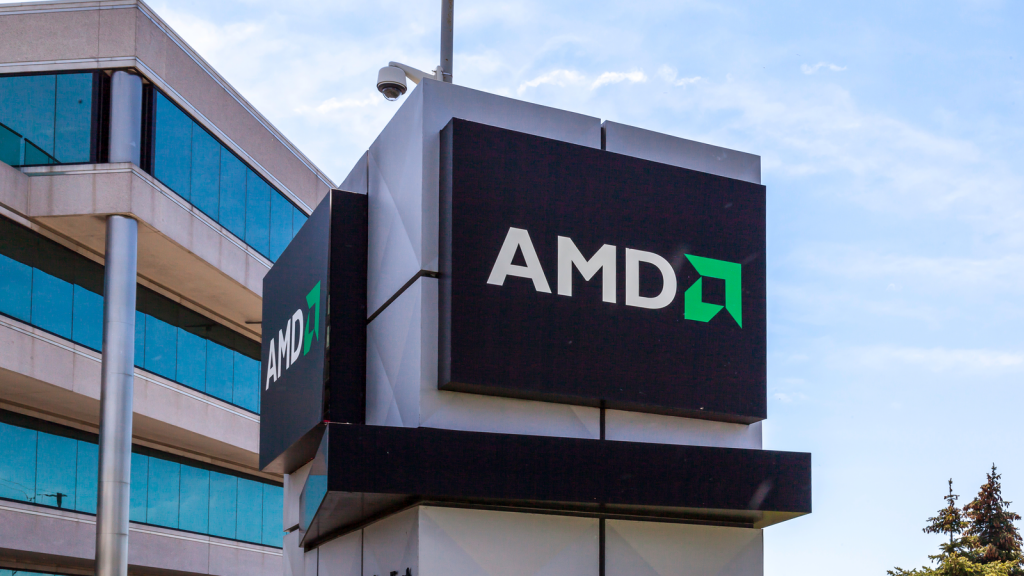
During November, Advanced Micro Devices (NASDAQ:AMD) stock bounced back to triple-digit prices. For weeks, investors anticipated AMD’s first major foray in the AI chips space. Now that this event has finally happened, the question is whether shares can continue climbing higher, or if a far less impressive price performance is just around the corner.
Even before this AI chip launch, price trends appeared to be changing for shares. Since hitting prices topping $125 per share, the stock has slid slightly. However, if we’re going to assess what lies ahead for AMD, we likely need to look at more than just this latest dip. With this, let’s dive in.
AMD Stock and the Launch of MI300
On Dec. 6, Advanced Micro Devices’ MI300 data center GPU accelerator finally made its debut, at the company’s “Advancing AI” event. As discussed above, the market has been eagerly awaiting MI300’s launch. The success of this product could determine how successful the company is at grabbing AI chip market share from the current market leader, Nvidia (NASDAQ:NVDA).
Yes, the stakes are high, and the aforementioned slide in price for AMD stock may signal the market is taking profit now, ahead of disappointment down the road. However, MI300 may not need to be a rip-roaring success to get meaningful results once more shares.
Advanced Micro Devices has modest initial sales expectations for the MI300. Management has forecasted total revenue of $2 billion in 2024 from this product. Given the massive growth in demand for AI-related hardware, meeting/beating this target is well within-reach.
That’s not all. $2 billion in sales may sound modest, compared to the substantially greater level of revenue Nvidia is currently generating from its AI GPU products. The sales of this new product alone could go a long way in enabling AMD to continue making a growth comeback.
2024 May Not Be Another Banner Year
NVDA stock has of course been the stronger performer among AI chip plays this year, with its 225.3% move higher since the start of 2023. However, AMD stock hasn’t been a slouch in terms of performance. While not up by triple-digits, shares have experienced a nearly 85% surge in price year-to-date.
But while success with the MI300, not to mention any other AI-compatible products AMD launches in the coming year, may keep the stock on an upward trajectory, something else may need to happen for shares to surge yet again in 2024.
Another banner year for AMD hinges far more heavily on a recovery in demand among non-AI end users than is the case with Nvidia, namely chip demand in the PC and gaming markets. Previously, I have noted that a possible launch of AI-enabled PCs next summer by HP (NYSE:HPQ) could help jumpstart a big demand rebound from this market.
That said, based upon AMD’s latest updates to its near-term outlook, which was not well-received by the market, the jury’s still out whether the non-AI recovery in subsequent quarters will be enough to sustain bullish sentiment for shares.
Tread Carefully, but Still Feel Free to Buy
Even as the MI300 launch makes big news, there is no big change to my view on this AI chip play.
Nvidia remains above and beyond my top choice among chip stocks, with high exposure to the generative artificial intelligence trend. However, I’m not exactly writing AMD off as some sort of “also-ran” among AI stocks. There’s big potential for MI300, and with AMD’s other AI-related efforts.
The resultant billions in additional revenue, combined with a sufficient non-AI recovery, could propel this stock back towards its pre-tech sell-off high of around $162 per share, even as shares (trading for 44.5 times earnings, a premium to NVDA’s forward multiple of 37.9) more greatly price-in this possibility as a near-certainty.
Tread carefully, but still free to consider AMD stock worthy of a buy.
AMD stock earns a B rating in Portfolio Grader.
On the date of publication, Louis Navellier had a long position in NVDA. Louis Navellier did not have (either directly or indirectly) any other positions in the securities mentioned in this article.
The InvestorPlace Research Staff member primarily responsible for this article did not hold (either directly or indirectly) any positions in the securities mentioned in this article.




